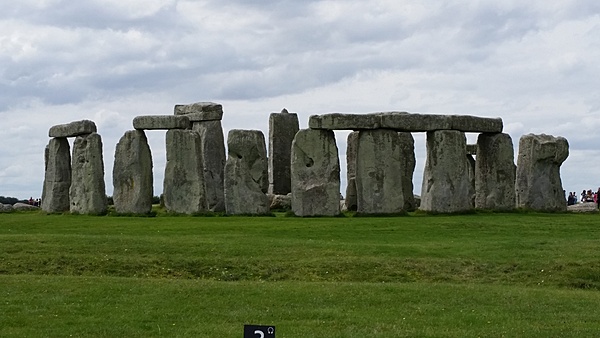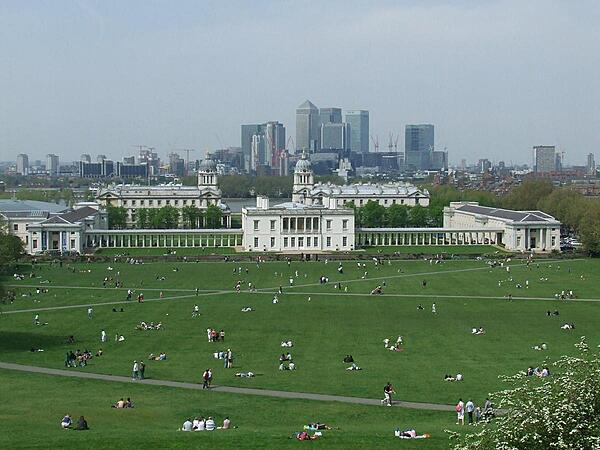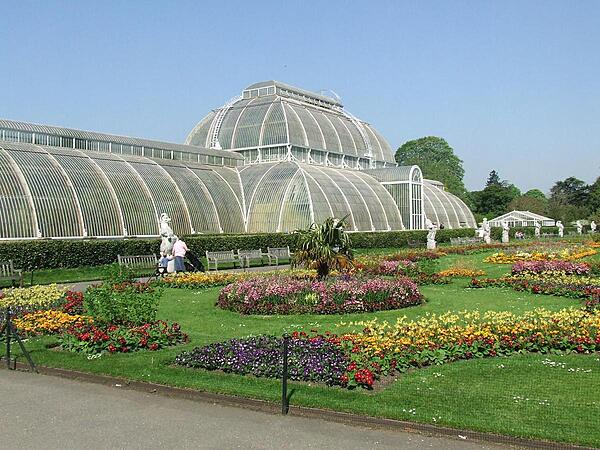
conventional long form: United Kingdom of Great Britain and Northern Ireland; note - the island of Great Britain includes England, Scotland, and Wales
conventional short form: United Kingdom
abbreviation: UK
etymology: self-descriptive country name; the designation "Great Britain," in the sense of "Larger Britain," dates back to medieval times and was used to distinguish the island from "Little Britain," or Brittany in modern France; the name Ireland derives from the Gaelic "Eriu," the matron goddess of Ireland (goddess of the land)
parliamentary constitutional monarchy; a Commonwealth realm
name: London
geographic coordinates: 51 30 N, 0 05 W
time difference: UTC 0 (5 hours ahead of Washington, DC, during Standard Time)
daylight saving time: +1hr, begins last Sunday in March; ends last Sunday in October
time zone note: the time statements apply to the United Kingdom proper, not to its crown dependencies or overseas territories
etymology: the name derives from the Roman settlement of Londinium, established on the current site of London around A.D. 43; the original meaning of the name is uncertain
England: 24 two-tier counties, 32 London boroughs and 1 City of London or Greater London, 36 metropolitan districts, 59 unitary authorities (including 4 single-tier counties*);
two-tier counties: Cambridgeshire, Cumbria, Derbyshire, Devon, East Sussex, Essex, Gloucestershire, Hampshire, Hertfordshire, Kent, Lancashire, Leicestershire, Lincolnshire, Norfolk, North Yorkshire, Nottinghamshire, Oxfordshire, Somerset, Staffordshire, Suffolk, Surrey, Warwickshire, West Sussex, Worcestershire
London boroughs and City of London or Greater London: Barking and Dagenham, Barnet, Bexley, Brent, Bromley, Camden, Croydon, Ealing, Enfield, Greenwich, Hackney, Hammersmith and Fulham, Haringey, Harrow, Havering, Hillingdon, Hounslow, Islington, Kensington and Chelsea, Kingston upon Thames, Lambeth, Lewisham, City of London, Merton, Newham, Redbridge, Richmond upon Thames, Southwark, Sutton, Tower Hamlets, Waltham Forest, Wandsworth, Westminster
metropolitan districts: Barnsley, Birmingham, Bolton, Bradford, Bury, Calderdale, Coventry, Doncaster, Dudley, Gateshead, Kirklees, Knowlsey, Leeds, Liverpool, Manchester, Newcastle upon Tyne, North Tyneside, Oldham, Rochdale, Rotherham, Salford, Sandwell, Sefton, Sheffield, Solihull, South Tyneside, St. Helens, Stockport, Sunderland, Tameside, Trafford, Wakefield, Walsall, Wigan, Wirral, Wolverhampton
unitary authorities: Bath and North East Somerset; Bedford; Blackburn with Darwen; Blackpool; Bournemouth, Christchurch and Poole; Bracknell Forest; Brighton and Hove; City of Bristol; Buckinghamshire; Central Bedfordshire; Cheshire East; Cheshire West and Chester; Cornwall; Darlington; Derby; Dorset; Durham County*; East Riding of Yorkshire; Halton; Hartlepool; Herefordshire*; Isle of Wight*; Isles of Scilly; City of Kingston upon Hull; Leicester; Luton; Medway; Middlesbrough; Milton Keynes; North East Lincolnshire; North Lincolnshire; North Northamptonshire; North Somerset; Northumberland*; Nottingham; Peterborough; Plymouth; Portsmouth; Reading; Redcar and Cleveland; Rutland; Shropshire; Slough; South Gloucestershire; Southampton; Southend-on-Sea; Stockton-on-Tees; Stoke-on-Trent; Swindon; Telford and Wrekin; Thurrock; Torbay; Warrington; West Berkshire; West Northamptonshire; Wiltshire; Windsor and Maidenhead; Wokingham; York
Northern Ireland: 5 borough councils, 4 district councils, 2 city councils;
borough councils: Antrim and Newtownabbey; Ards and North Down; Armagh City, Banbridge, and Craigavon; Causeway Coast and Glens; Mid and East Antrim
district councils: Derry City and Strabane; Fermanagh and Omagh; Mid Ulster; Newry, Murne, and Down
city councils: Belfast; Lisburn and Castlereagh
Scotland: 32 council areas;
council areas: Aberdeen City, Aberdeenshire, Angus, Argyll and Bute, Clackmannanshire, Dumfries and Galloway, Dundee City, East Ayrshire, East Dunbartonshire, East Lothian, East Renfrewshire, City of Edinburgh, Eilean Siar (Western Isles), Falkirk, Fife, Glasgow City, Highland, Inverclyde, Midlothian, Moray, North Ayrshire, North Lanarkshire, Orkney Islands, Perth and Kinross, Renfrewshire, Shetland Islands, South Ayrshire, South Lanarkshire, Stirling, The Scottish Borders, West Dunbartonshire, West Lothian
Wales: 22 unitary authorities;
unitary authorities: Blaenau Gwent, Bridgend, Caerphilly, Cardiff, Carmarthenshire, Ceredigion, Conwy, Denbighshire, Flintshire, Gwynedd, Isle of Anglesey, Merthyr Tydfil, Monmouthshire, Neath Port Talbot, Newport, Pembrokeshire, Powys, Rhondda Cynon Taff, Swansea, The Vale of Glamorgan, Torfaen, Wrexham
Anguilla; Bermuda; British Indian Ocean Territory; British Virgin Islands; Cayman Islands; Falkland Islands; Gibraltar; Montserrat; Pitcairn Islands; Saint Helena, Ascension, and Tristan da Cunha; South Georgia and the South Sandwich Islands; Turks and Caicos Islands (12)
no official date of independence: 927 (minor English kingdoms unite); 3 March 1284 (enactment of the Statute of Rhuddlan uniting England and Wales); 1536 (Act of Union formally incorporates England and Wales); 1 May 1707 (Acts of Union formally unite England, Scotland, and Wales as Great Britain); 1 January 1801 (Acts of Union formally unite Great Britain and Ireland as the United Kingdom of Great Britain and Ireland); 6 December 1921 (Anglo-Irish Treaty formalizes partition of Ireland; six counties remain part of the United Kingdom and Northern Ireland); 12 April 1927 (Royal and Parliamentary Titles Act establishes current name of the United Kingdom of Great Britain and Northern Ireland)
the UK does not celebrate one particular national holiday
history: uncoded; partly statutes, partly common law and practice
amendments: proposed as a bill for an Act of Parliament by the government, by the House of Commons, or by the House of Lords; passage requires agreement by both houses and by the monarch (Royal Assent); many previous, last in 2020 - The European Union (Withdrawal Agreement) Act 2020, European Union (Future Relationship) Act 2020
common law system; has nonbinding judicial review of Acts of Parliament under the Human Rights Act of 1998
accepts compulsory ICJ jurisdiction with reservations; accepts ICCt jurisdiction
citizenship by birth: no
citizenship by descent only: at least one parent must be a citizen of the United Kingdom
dual citizenship recognized: yes
residency requirement for naturalization: 5 years
18 years of age; universal
chief of state: King CHARLES III (since 8 September 2022); Heir Apparent Prince WILLIAM (son of the king, born 21 June 1982); note - CHARLES succeeded his mother, Queen ELIZABETH II, after serving as Prince of Wales (heir apparent) for over 64 years - the longest such tenure in British history
head of government: Prime Minister Rishi SUNAK (Conservative) (since 25 October 2022)
cabinet: Cabinet appointed by the prime minister
elections/appointments: the monarchy is hereditary; following legislative elections, the leader of the majority party or majority coalition usually becomes the prime minister; election last held on 12 December 2019 (next to be held no later than 28 January 2025)
note: in addition to serving as the UK head of state, the British sovereign is the constitutional monarch for 14 additional Commonwealth countries (these 15 states are each referred to as a Commonwealth realm)
description: bicameral Parliament consists of:
House of Lords (membership not fixed; as of October 2023, 778 lords were eligible to participate in the work of the House of Lords - 663 life peers, 90 hereditary peers, and 25 clergy; members are appointed by the monarch on the advice of the prime minister and non-party political members recommended by the House of Lords Appointments Commission); note - House of Lords total does not include ineligible members or members on leave of absence
House of Commons (650 seats; members directly elected in single-seat constituencies by simple majority popular vote to serve 5-year terms unless the House is dissolved earlier)
elections:
House of Lords - no elections; note - in 1999, as provided by the House of Lords Act, elections were held in the House of Lords to determine the 92 hereditary peers who would remain; elections held only as vacancies in the hereditary peerage arise)
House of Commons - last held on 12 December 2019 (next to be held no later than 28 January 2025)
election results:
House of Lords - composition - men 552, women 226, percent of women 29%
House of Commons - percent of vote by party - Conservative 54.9%, Labor 30.8%, SNP 6.8%, Lib Dems 2.2%, DUP 1.2%, Sinn Fein 1.1%, Plaid Cymru .6%, other 2.5%; seats by party - Conservative 365, Labor 202, SNP 48, Lib Dems 11, DUP 8, Sinn Fein 7, Plaid Cymru 4, other 5; composition - men 425, women 225, percent of women 34.6%; total Parliament percent of women 31.3%
highest court(s): Supreme Court (consists of 12 justices, including the court president and deputy president); note - the Supreme Court was established by the Constitutional Reform Act 2005 and implemented in 2009, replacing the Appellate Committee of the House of Lords as the highest court in the United Kingdom
judge selection and term of office: judge candidates selected by an independent committee of several judicial commissions, followed by their recommendations to the prime minister, and appointed by the monarch; justices serve for life
subordinate courts: England and Wales: Court of Appeal (civil and criminal divisions); High Court; Crown Court; County Courts; Magistrates' Courts; Scotland: Court of Sessions; Sheriff Courts; High Court of Justiciary; tribunals; Northern Ireland: Court of Appeal in Northern Ireland; High Court; county courts; magistrates' courts; specialized tribunals
Alliance Party (Northern Ireland) [Naomi LONG]
Conservative and Unionist Party [Rishi SUNAK]
Democratic Unionist Party or DUP (Northern Ireland) [Sir Jeffrey DONALDSON]
Green Party of England and Wales or Greens [Carla DENYER and Adrian RAMSAY]
Labor (Labour) Party [Sir Keir STARMER]
Liberal Democrats (Lib Dems) [Sir Ed DAVEY]
Party of Wales (Plaid Cymru) [Llyr GRUFFYDD]
Scottish National Party or SNP [Humza YOUSAF]
Sinn Fein (Northern Ireland) [Mary Lou MCDONALD]
Social Democratic and Labor Party or SDLP (Northern Ireland) [Colum EASTWOOD]
UK Independence Party or UKIP [Neil HAMILTON]
Ulster Unionist Party or UUP (Northern Ireland) [Doug BEATTIE]
ADB (nonregional member), AfDB (nonregional member), Arctic Council (observer), Australia Group, BIS, C, CBSS (observer), CD, CDB, CE, CERN, EAPC, EBRD, ECB, EIB, EITI (implementing country), ESA, EU, FAO, FATF, G-5, G-7, G-8, G-10, G-20, IADB, IAEA, IBRD, ICAO, ICC (national committees), ICCt, ICRM, IDA, IEA, IFAD, IFC, IFRCS, IGAD (partners), IHO, ILO, IMF, IMO, IMSO, Interpol, IOC, IOM, IPU, ISO, ITSO, ITU, ITUC (NGOs), MIGA, MONUSCO, NATO, NEA, NSG, OAS (observer), OECD, OPCW, OSCE, Pacific Alliance (observer), Paris Club, PCA, PIF (partner), SELEC (observer), SICA (observer), UN, UNCTAD, UNESCO, UNFICYP, UNHCR, UNMISS, UNOOSA, UNRWA, UN Security Council (permanent), UNSOM, UPU, Wassenaar Arrangement, WCO, WHO, WIPO, WMO, WTO, ZC
chief of mission: Ambassador Karen Elizabeth PIERCE (since 8 April 2020)
chancery: 3100 Massachusetts Avenue NW, Washington, DC 20008
telephone: [1] (202) 588-6500
FAX: [1] (202) 588-7870
email address and website:
britishembassyenquiries@gmail.com
https://www.gov.uk/world/organisations/british-embassy-washington
consulate(s) general: Atlanta, Boston, Chicago, Denver, Houston, Los Angeles, Miami, New York, San Francisco
consulate(s): Orlando (FL), San Juan (Puerto Rico)
chief of mission: Ambassador Jane HARTLEY (since 19 July 2022)
embassy: 33 Nine Elms Lane, London, SW11 7US
mailing address: 8400 London Place, Washington DC 20521-8400
telephone: [44] (0) 20-7499-9000
FAX: [44] (0) 20-7891-3845
email address and website: SCSLondon@state.gov
https://uk.usembassy.gov/
consulate(s) general: Belfast, Edinburgh
blue field with the red cross of Saint George (patron saint of England) edged in white superimposed on the diagonal red cross of Saint Patrick (patron saint of Ireland), which is superimposed on the diagonal white cross of Saint Andrew (patron saint of Scotland); properly known as the Union Flag, but commonly called the Union Jack; the design and colors (especially the Blue Ensign) have been the basis for a number of other flags including other Commonwealth countries and their constituent states or provinces, and British overseas territories
lion (Britain in general); lion, Tudor rose, oak (England); lion, unicorn, thistle (Scotland); dragon, daffodil, leek (Wales); shamrock, flax (Northern Ireland); national colors: red, white, blue (Britain in general); red, white (England); blue, white (Scotland); red, white, green (Wales)
name: "God Save the King"
lyrics/music: unknown
note: in use since 1745; by tradition, the song serves as both the national and royal anthem of the UK; it is known as either "God Save the Queen" or "God Save the King," depending on the gender of the reigning monarch; it also serves as the royal anthem of many Commonwealth nations
total World Heritage Sites: 33 (28 cultural, 4 natural, 1 mixed); note - includes one site in Bermuda
selected World Heritage Site locales: Giant's Causeway and Causeway Coast (n); Ironbridge Gorge (c);  (c); Castles and Town Walls of King Edward in Gwynedd (c);
(c); Castles and Town Walls of King Edward in Gwynedd (c);  (c);
(c);  (c); Tower of London (c); St Kilda (m);
(c); Tower of London (c); St Kilda (m);  (c);
(c);  (c);
(c);  (c);
(c);  (c)
(c)
NOTE: The information regarding United Kingdom on this page is re-published from the 2024 World Fact Book of the United States Central Intelligence Agency and other sources. No claims are made regarding the accuracy of United Kingdom 2024 information contained here. All suggestions for corrections of any errors about United Kingdom 2024 should be addressed to the CIA or the source cited on each page.
This page was last modified 04 May 24, Copyright © 2024 ITA all rights reserved.